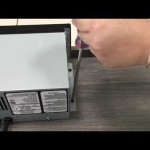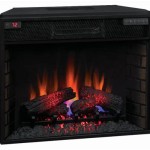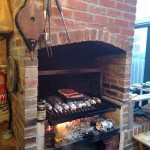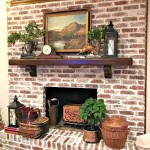Fireplace Inserts Natural Gas Reviews: A Comprehensive Guide
Natural gas fireplace inserts have become a popular choice for homeowners seeking an efficient and aesthetically pleasing heating solution. These inserts offer a convenient alternative to traditional wood-burning fireplaces, providing warmth and ambiance with minimal effort and reduced environmental impact. This article provides a detailed overview of natural gas fireplace inserts, focusing on key features, performance considerations, and a review of factors to consider when selecting the right model for individual needs.
A fireplace insert is essentially a sealed firebox designed to be installed within an existing masonry or prefabricated fireplace opening. Fueled by natural gas, these inserts offer consistent heat output, eliminating the need for manual wood handling and the associated mess. They also provide a safer and more controlled burning environment compared to open fireplaces.
The core function is to convert the existing, often inefficient, fireplace into a more effective heating appliance. Older fireplaces can lose significant heat through the chimney, but a natural gas insert minimizes this loss, radiating heat into the room instead. This improved energy efficiency translates to lower heating bills and a more comfortable living space.
Understanding the Benefits of Natural Gas Fireplace Inserts
Choosing a natural gas fireplace insert over other heating options offers several distinct advantages. These benefits range from operational convenience to environmental considerations, making them a compelling choice for many homeowners.
One of the most significant benefits is convenience. Natural gas inserts light with the push of a button or the flick of a switch, often with remote control options. This eliminates the need to gather, stack, and load wood, as well as the cleanup associated with ash and soot. The consistent heat output can be easily regulated, providing a comfortable temperature without constant adjustments.
Energy efficiency is another key advantage. Traditional fireplaces are notoriously inefficient, losing much of their heat up the chimney. Natural gas inserts, being sealed units, significantly reduce this heat loss, directing more heat into the room. This contributes to lower energy bills and a smaller carbon footprint.
Safety is also enhanced with natural gas inserts. The sealed firebox prevents sparks and embers from escaping, reducing the risk of fire. Many models also include safety features such as oxygen depletion sensors, which shut off the gas supply if carbon monoxide levels become too high.
Aesthetic appeal is not overlooked. Natural gas fireplace inserts are available in a wide range of styles and finishes, allowing homeowners to customize the look of their fireplace to match their décor. Options include realistic log sets, decorative glass, and various frame designs.
Key Features and Performance Considerations
When evaluating natural gas fireplace inserts, several key features and performance characteristics should be considered. These factors directly impact the insert's efficiency, functionality, and overall suitability for a particular home.
Heat output is a critical consideration. Measured in British Thermal Units (BTUs), heat output indicates the amount of heat the insert can generate per hour. The appropriate BTU rating depends on the size of the room to be heated and the climate of the region. A larger room or colder climate will require a higher BTU rating.
Efficiency ratings are also important. Look for inserts with high efficiency ratings, as this indicates that a greater percentage of the gas consumed is converted into usable heat. Efficiency is typically expressed as a percentage, with higher percentages indicating greater efficiency.
Ventilation requirements are another area to consider carefully. Natural gas inserts require proper ventilation to safely exhaust combustion byproducts. There are two main types of venting systems: direct vent and B-vent. Direct vent systems draw air from outside for combustion and exhaust gases directly to the outside, while B-vent systems rely on the existing chimney. Direct vent systems are generally considered more efficient and safer.
Ignition systems vary among different models. Some inserts use a standing pilot light, which is a small flame that constantly burns to ignite the main burner. Others use an electronic ignition system, which ignites the burner only when needed, saving energy. Electronic ignition systems are generally more energy-efficient but may require a power outlet.
Control options range from simple on/off switches to sophisticated remote controls with programmable thermostats. Remote controls offer convenience and allow for precise temperature adjustments. Thermostatic controls maintain a consistent room temperature, while programmable thermostats allow for setting different temperatures at different times of the day.
Log sets and flame patterns contribute to the aesthetic appeal of the insert. Realistic log sets can mimic the appearance of a traditional wood-burning fire. Flame patterns vary depending on the design of the burner and log arrangement, influencing the overall ambiance of the fireplace.
Safety features are paramount. Look for inserts that include an oxygen depletion sensor (ODS), which shuts off the gas supply if oxygen levels in the room become too low. Other safety features may include child safety locks and overheat protection.
Reviewing Factors to Consider When Selecting a Natural Gas Fireplace Insert
Choosing the right natural gas fireplace insert requires careful consideration of individual needs, budget, and home characteristics. A thorough assessment of these factors ensures that the selected insert provides optimal performance, efficiency, and satisfaction.
First, assess the size of the area to be heated. This will determine the appropriate BTU rating for the insert. Measure the square footage of the room and consider factors such as ceiling height, insulation levels, and window placement. Consult with a professional to determine the optimal BTU rating for the specific space.
Next, evaluate the existing fireplace opening. Measure the dimensions of the opening to ensure that the chosen insert will fit properly. Consider the shape of the opening and any architectural features that may affect the installation process.
Determine the type of venting system required. Consult with a qualified installer to determine whether a direct vent or B-vent system is appropriate for the home. Direct vent systems offer greater efficiency and safety but may require more extensive installation work.
Establish a budget for the project. Natural gas fireplace inserts vary in price depending on their features, efficiency, and brand. Consider the cost of the insert itself, as well as the cost of installation, venting, and any necessary modifications to the fireplace opening.
Research different brands and models. Read reviews and compare specifications to identify inserts that meet individual needs and preferences. Consider factors such as energy efficiency, safety features, control options, and aesthetic appeal.
Consider the aesthetics of the insert. Choose an insert that complements the décor of the room and enhances the overall ambiance of the fireplace. Options include different log sets, flame patterns, and frame finishes.
Evaluate the warranty offered by the manufacturer. A comprehensive warranty provides peace of mind and protects against potential defects or malfunctions. Check the terms and conditions of the warranty to understand the coverage provided.
Engage a qualified installer. Proper installation is crucial for the safe and efficient operation of a natural gas fireplace insert. Hire a licensed and experienced installer to ensure that the insert is installed correctly and in accordance with local codes and regulations.
Consider long-term operating costs. While natural gas inserts offer lower operating costs compared to wood-burning fireplaces, it's important to consider the ongoing cost of natural gas. Compare gas prices in the area and estimate the annual fuel consumption based on usage habits.
Finally, prioritize safety features. Ensure that the selected insert includes essential safety features such as an oxygen depletion sensor (ODS) and overheat protection. These features help to prevent accidents and ensure the safe operation of the fireplace.
.aspx?strip=all)
Top 11 Gas Fireplace Insert Trends Of 2024

How Much Does A Gas Fireplace Insert Cost Forbes Home

Top 5 Reasons To Consider A Fireplace Inserts Wi Ia Il

Gas Fireplace Inserts At Com

Reviews For Pleasant Hearth Universal Circulating Zero Clearance 32 In Ventless Dual Fuel Fireplace Insert Pg 1 The Home Depot

Enviro The E30 Gas Fireplace Insert Toronto Home Comfort

12 Best Gas Log Fireplace Insert And Reviews Logs

How To Buy A Gas Fireplace Insert Buyer S Guide From Regency

Enviro The E30 Gas Fireplace Insert Toronto Home Comfort

Enviro S Gas E33 Insert
Related Posts








